
Come fall, blooms have turned to seedpods and the weather has turned brisk, but the garden can still be beautiful. For many plants, particularly those on a forest’s edge, it is their moment to shine. They show off in different ways than spring and summer bloomers, with vibrant red and purple berries, technicolor foliage, and glowing bark.
Plants that look good in winter and fall are the workhorses of the gardening world. They have been up since spring and now kick into their second shift. Below you will find a collection that goes the distance, carrying gardens through winter with unique and striking beauty while creating an enchanted, woodland scene.
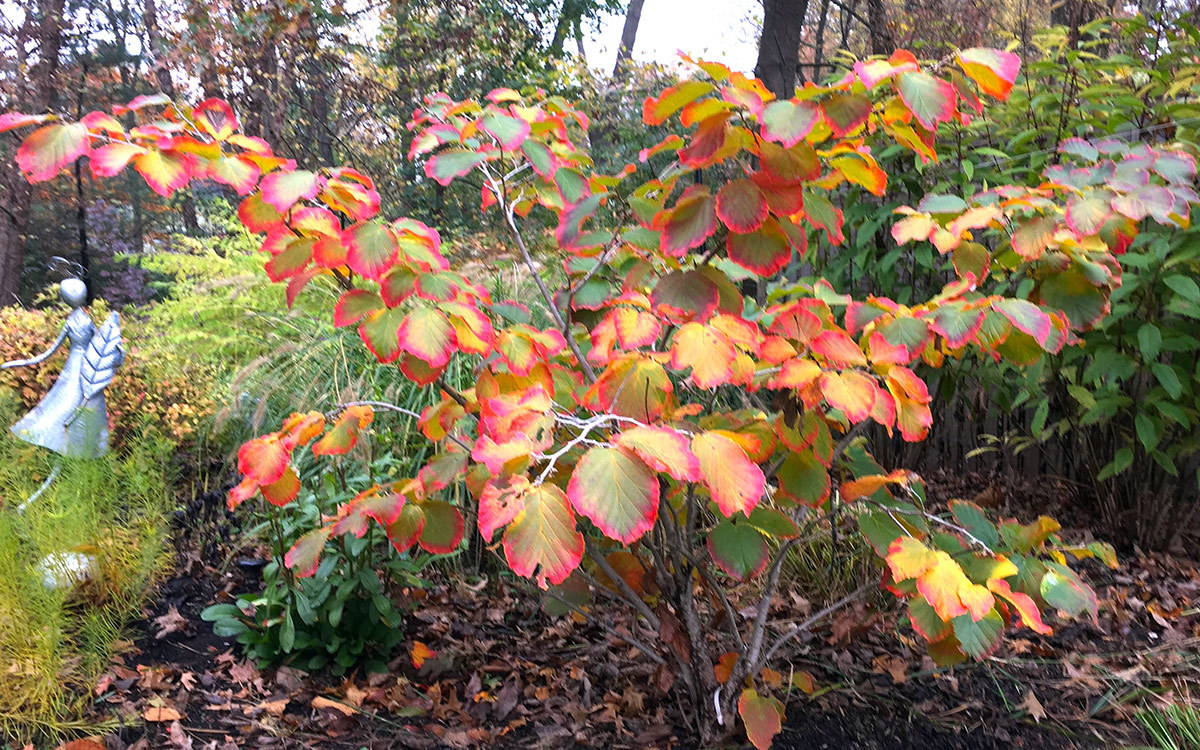
‘Jelena’ witch hazel: often overlooked but always over-performing, witch hazel is a plant like no other
Hamamelis x intermedia ‘Jelena’
Zones: 5–8
Size: 8 to 12 feet tall and wide
Conditions: Full sun, partial sun; moist but well-drained soil
Native range: China and Japan
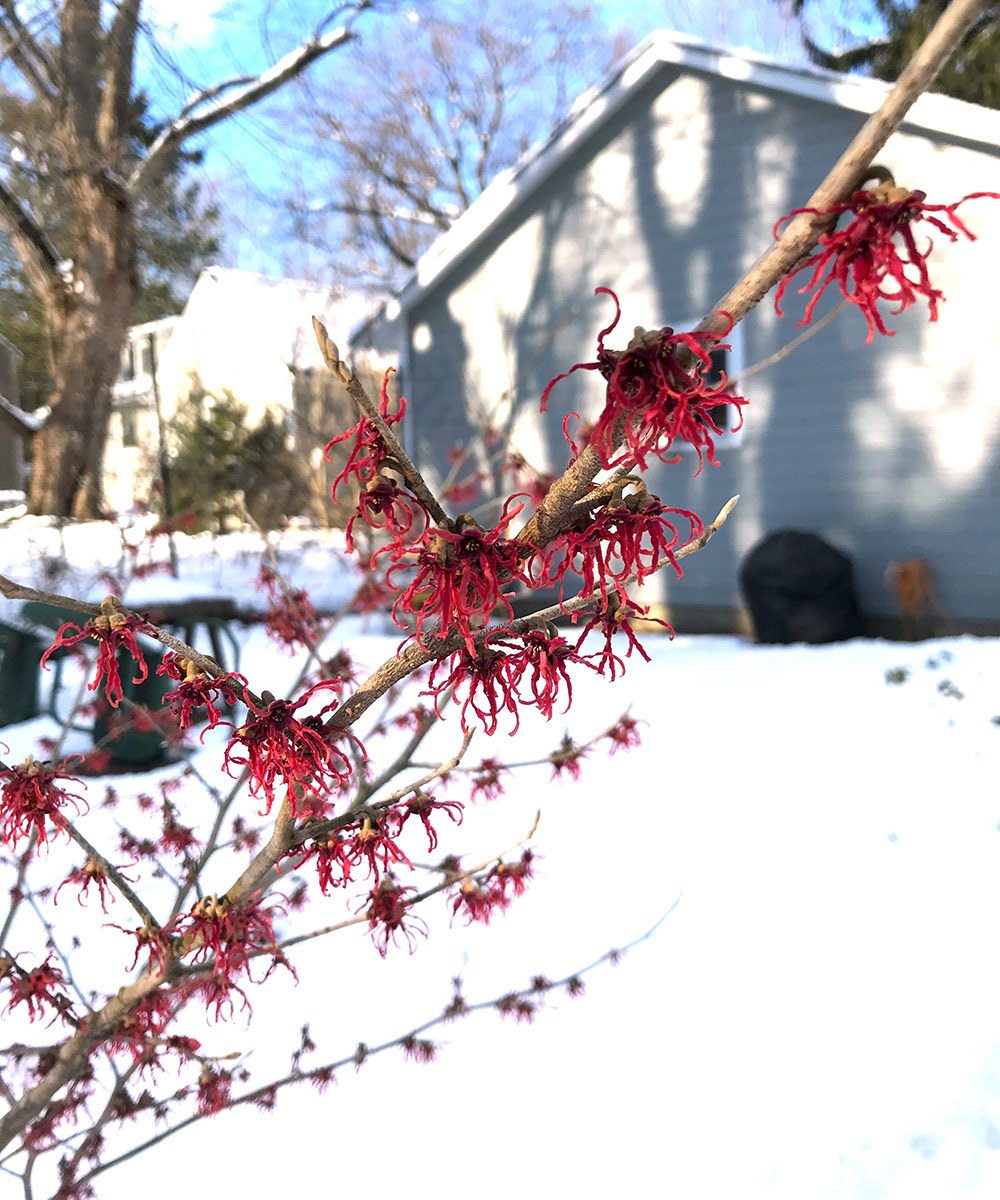
For many years, witch hazels were perceived as messy, unattractive shrubs ill-suited for landscapes. Then a cross between Chinese witch hazel (Hamamelis mollis) and Japanese witch hazel (Hamamelis japonica) produced the hybrid cultivar that changed everything. One of those cultivars, ‘Jelena’, is a superstar. It has an attractive vase shape with an accommodating size for gardens large and small. It is revered for being one of the first shrubs to bloom in winter, as early as February. The blooms are a deep red with unique twisting, split leaves. But for me, fall is Jelena’s finest season. It produces mind-blowing foliage so bright and intense, it is reminiscent of a parrot. It also inexplicably changes from year to year. My ‘Jelena’ has been a full orange-red one year, all red-outlined leaves with a yellow center the next year, and a jewel-tone deep burgundy the year after that. It does well in moist soil but does not like wet feet, and being fully dry does not suit it, either.
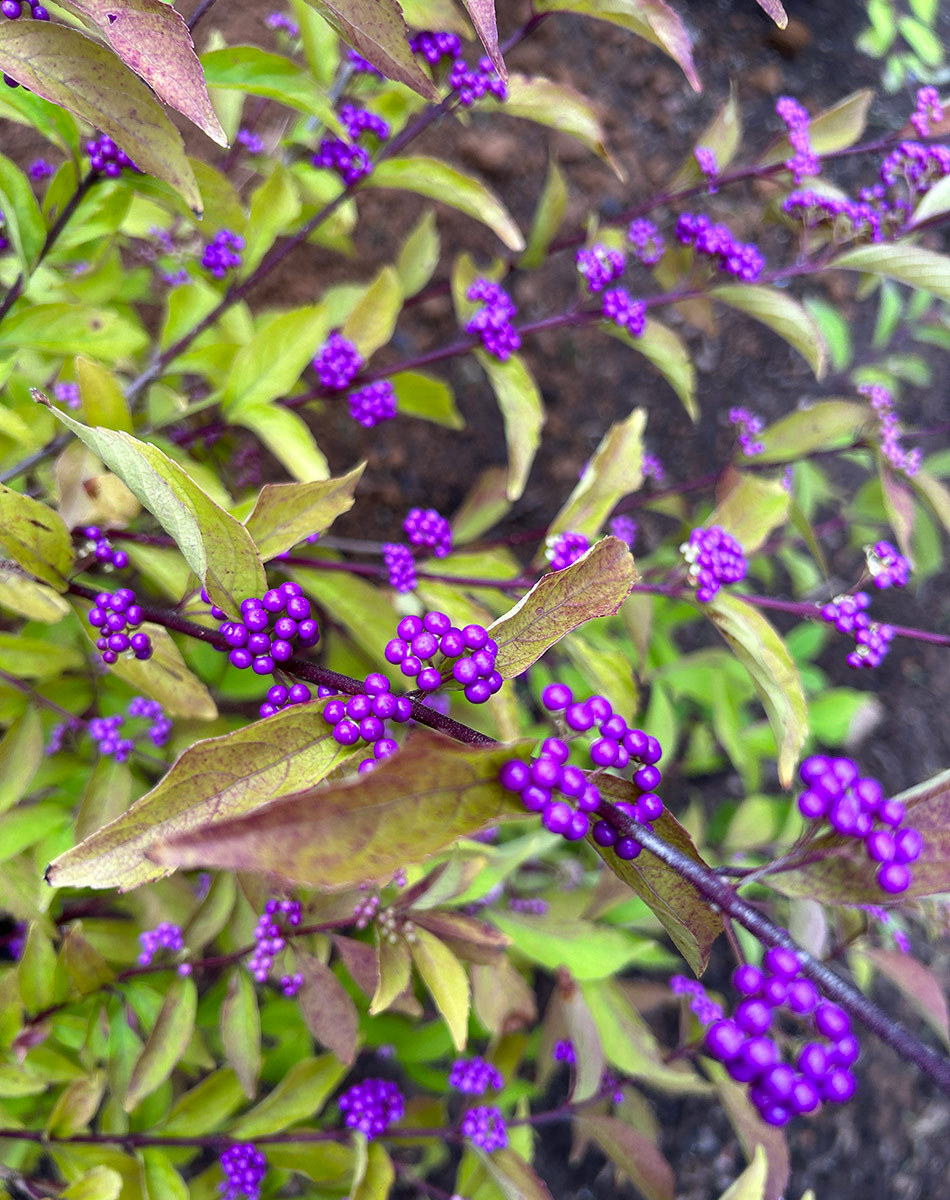
‘Early Amethyst’ beautyberry: fall jewelry
Callicarpa dichotoma ‘Early Amethyst’
Zones: 5–8
Size: 3 to 4 feet tall and 4 to 5 feet wide
Condition: Full sun to partial shade; well-drained soil
Native range: China, Japan, and Korea
In late summer, when flushes of purple berries appear along the branches of the beautyberry shrub, the sight is breathtaking. Unlike other shrubs with scattershot placement, these berries cascade down arching branches in consistent lengths and shapes, creating the effect of a plant adorned in jewelry. In fall the foliage turns from spring green to a golden yellow tinged with pink. The effect is magical, especially since the berries can last through winter. These low-maintenance shrubs are not that fussy about sun—mine are in partial shade—and grow in average soil. They are a very manageable height at about 3 feet, making them perfect to tuck into a border, and are considered one of the best ornamental fruiting shrubs. There is a native Callicarpa as well, American beautyberry (Callicarpa americana).
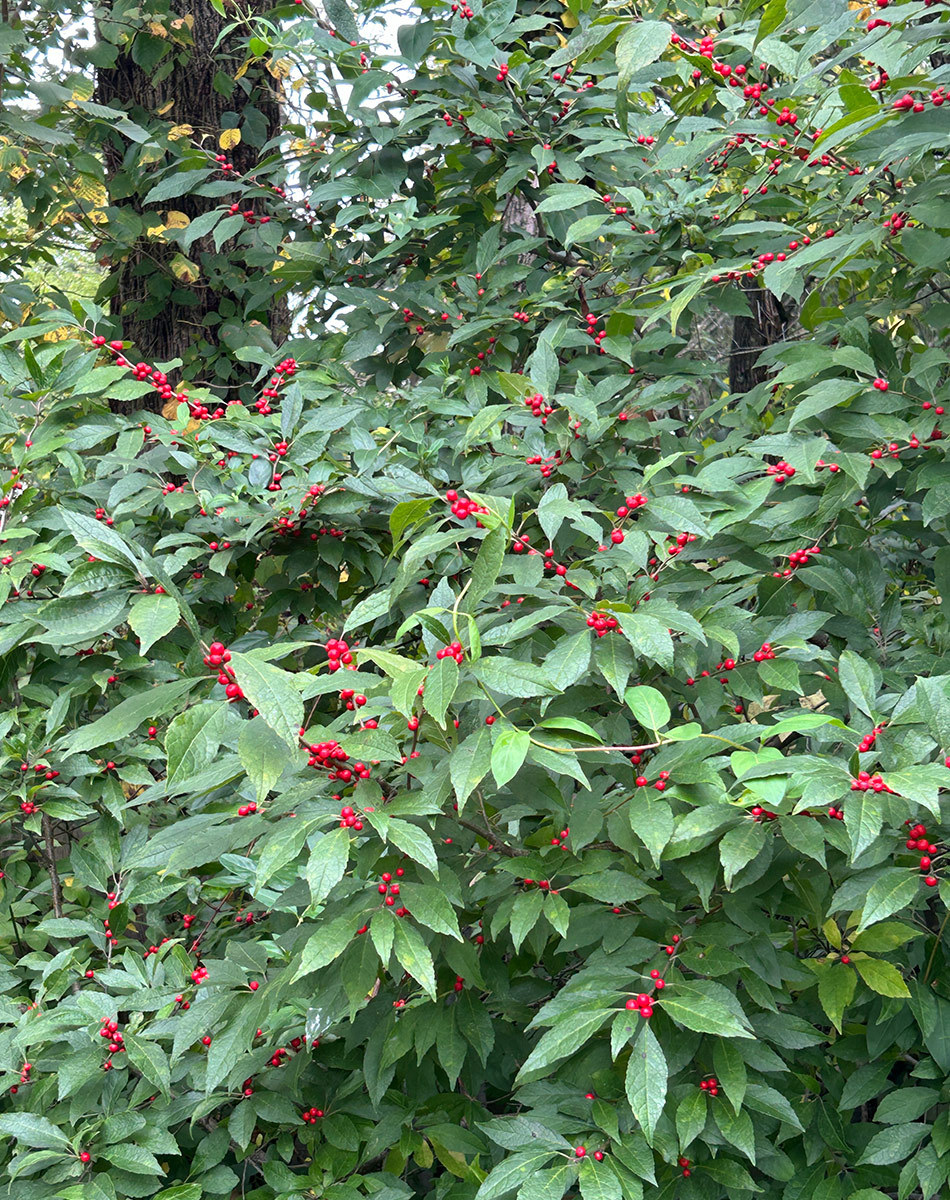
Hearty winterberry: showy and easy to grow
Ilex verticillata
Zones: 3–9
Size: 6 to 10 feet tall and 6 to 10 feet wide
Condition: Full sun to part shade; well-drained soil
Native range: Eastern North America
Winterberry is a native holly beloved for its red berries that appear in early fall and last through winter (unless eaten by birds, who adore them). The shrub attracts a wide range of feathered friends, from robins to bluebirds to mockingbirds. As is common with natives, it is a rugged plant that grows in full sun to partial shade. It can handle most soils and is often used in rain gardens or in wet sites; mine is growing right next to a drainage swale in part shade. In late spring, they bloom with small white flowers, but it is the fall’s cheery red berries that gardeners celebrate. When I see them, they conjure warm winter memories and hopes of more to come.
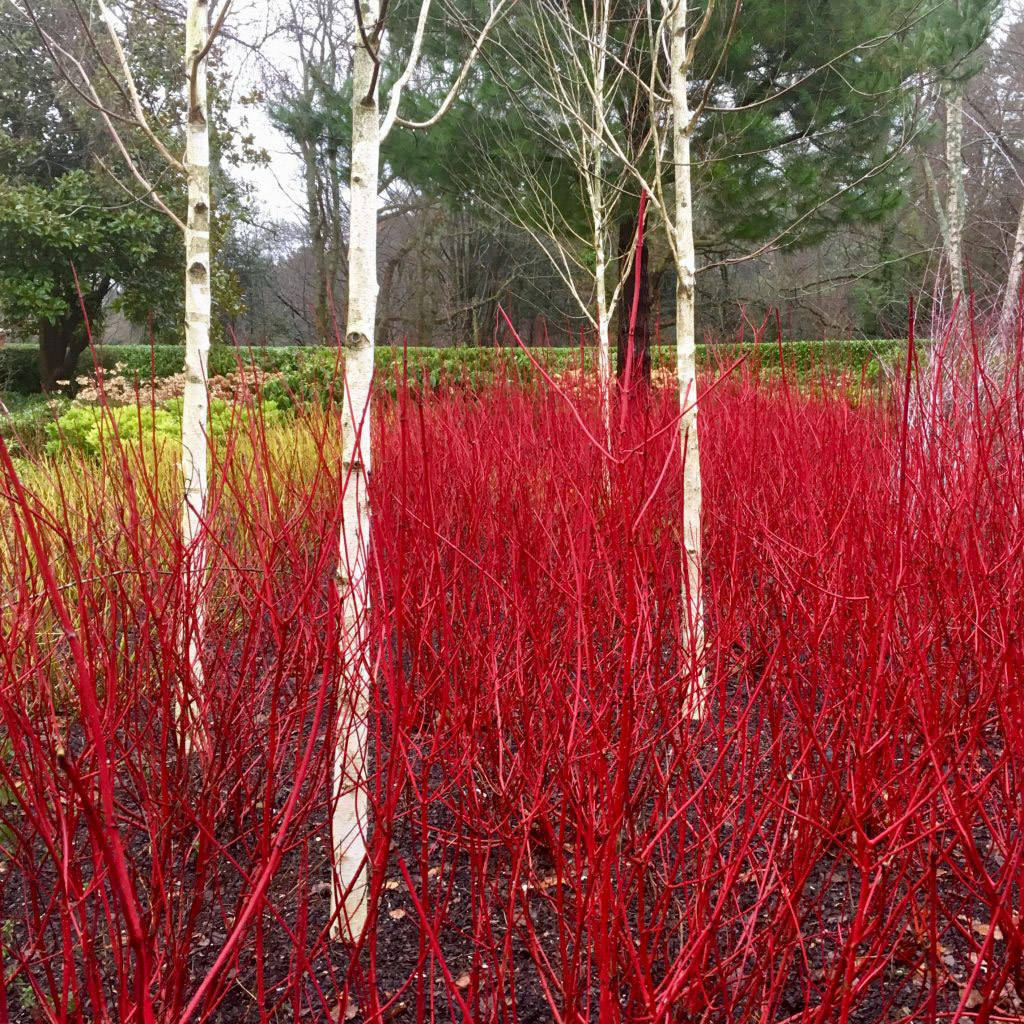
Red twig dogwood and Himalayan birch: a stunning winter combination
| Cornus alba ‘Sibirica’
Zones: 3–7 Size: 4 to 7 feet tall and 3 to 5 feet wide Conditions: Full sun, partial sun; moist, well-drained soil but tolerant of dry and poor soils. Native range: Eastern and central Asia |
Betula utilis var. jacquemontii
Zones: 4–7 Size: 30 to 40 feet tall and 20 to 25 feet wide Conditions: Full sun, partial sun; moist, well-drained soil Native range: Himalayas |
This combination is all about winter. Individually the white bark of Himalayan birch and crimson stems of red twig dogwood stand on their own in the winter landscape. The dogwood in particular looks spectacular planted in masses or winding down a bed. But next-level magic happens when they are planted together. The red stems against the white bark make for a winter show-stopper, a combination as smart as it is stunning. The two plants are almost natural partners: they grow in similar conditions—sunny with moist soil—and in similar areas. An area by a pond is a perfect place to try this. I just planted it after seeing pictures from UK-based design firm Acres Wild. I can’t wait for winter.
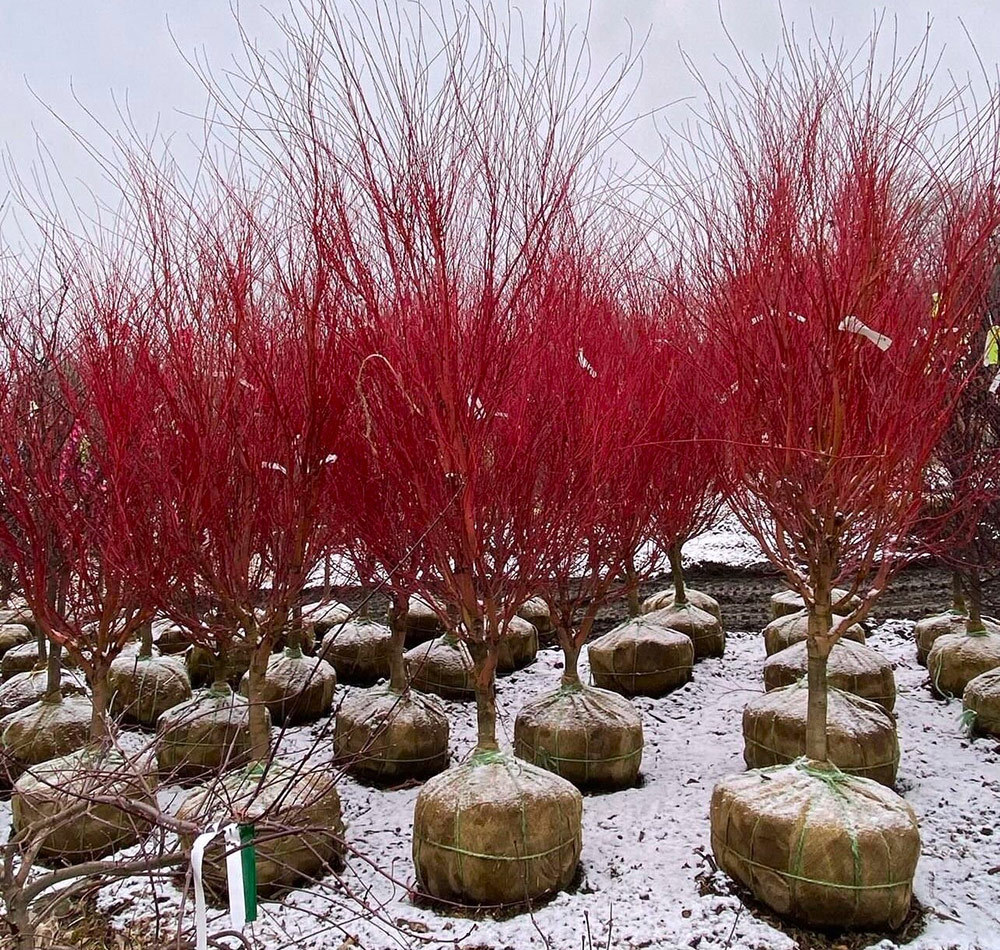
Coral bark maple: an all-season beauty whose show-stopping bark lights up winter landscapes
Acer palmatum ‘Sango Kaku’
Zones: 5–8
Size: 15 to 25 feet tall and 15 to 20 feet wide
Condition: Filtered sun, full sun, partial sun; moist, well-drained soil
Native range: Japan, Korea, and China
Few plants deliver all-season beauty like the coral bark maple. Pretty in spring with dainty, lime leaves tinged with pink, it only gets more attractive as the year goes on, ending in fall with golden-yellow leaves. Once the leaves have fallen, the tree’s coral-red-colored bark takes center stage. It glows against the snow, satisfying gardeners craving for color with months to go before spring. The bark easily attracts attention with such unusual color. As a small tree or large shrub, it’s a perfect specimen for any size garden. It has nice form, with an attractive vase shape and mounded head. There’s a lot to love about this tree.
Find more inspiration for your fall and winter garden:
And for more Mid-Atlantic regional reports, click here.
Caitlin Boyle is a landscape designer, writer, and speaker who owns Dirt Diva Designs in Chatham, New Jersey.
Photos, except where noted: Caitlin Boyle








